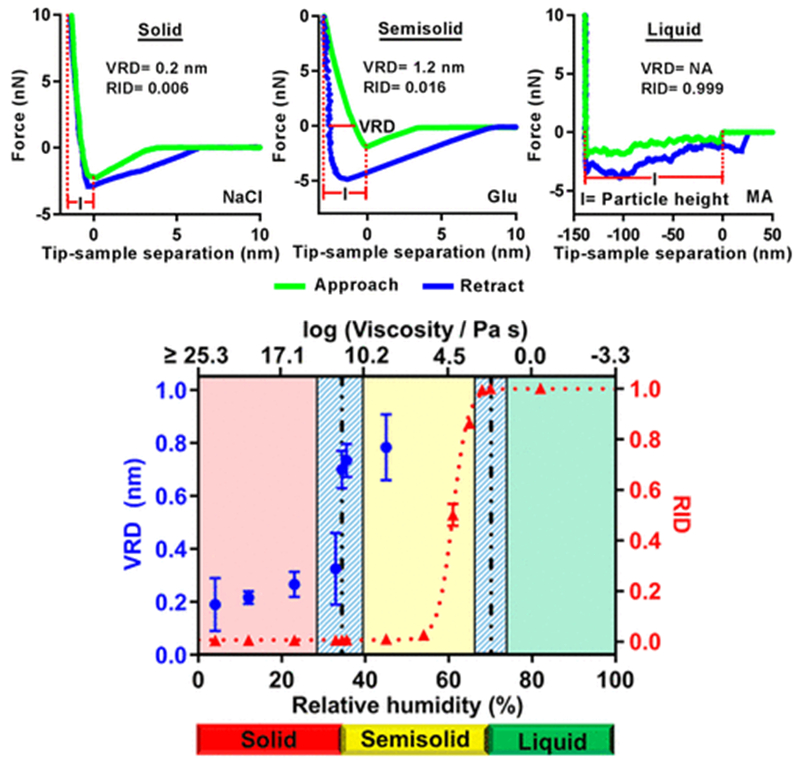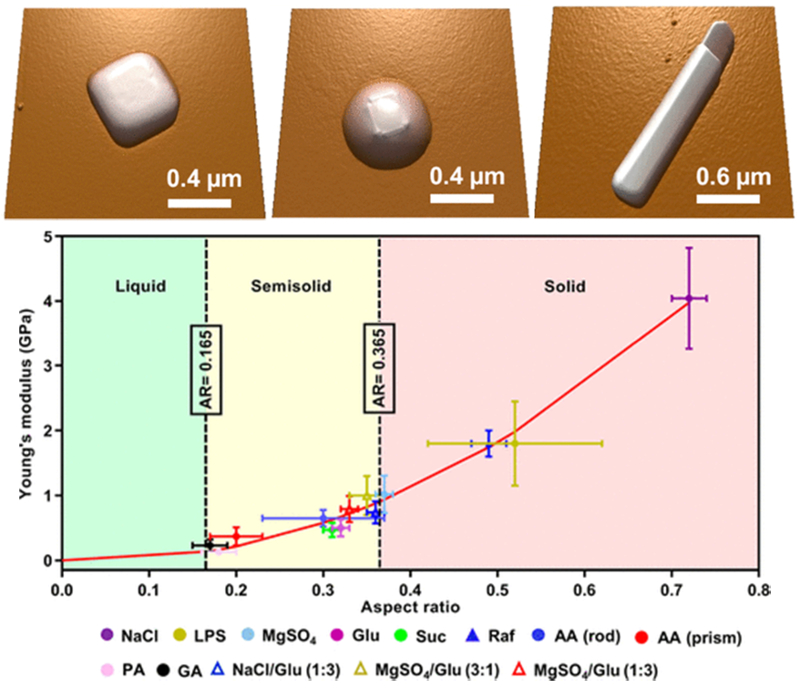AFM Systems
AFM Accessories
Learning
Contact Us
 Part of the Oxford Instruments Group
Part of the Oxford Instruments Group
Measurements of individual sea spray aerosol particles showed correlations between viscoelastic properties, morphology, and phase state that could lead to quicker and simpler assessment of particle phase state.

Sea spray is one of many atmospheric aerosols that impact climate and the environment by absorbing solar radiation, nucleating clouds, and other mechanisms. To model these effects more accurately, tools capable of characterizing individual, sub-micrometer-sized aerosol particles are needed. In particular, techniques to assess a particle’s phase state—whether it is liquid, semisolid, or solid—would be valuable but remain rare.
Towards this goal, University of Iowa researchers examined several different components of sea spray aerosol including inorganic salts, organic acids, and saccharides with an AFM methodology. Nanomechanical measurements revealed correlations between a component’s viscoelastic response distance (VRD), relative indentation depth (RID), and phase state. Morphology imaging further showed that particle aspect ratio could be directly linked to VRD and RID, and thus to phase state.
The results therefore indicate that phase state can be semi-quantitatively evaluated by morphology imaging alone, without prior knowledge of chemical composition. This ability provides a new strategy for rapidly assessing aerosol components that may prove useful for a range of atmospheric studies.

AFM measurements were made on aerosol particles deposited on silicon wafers. Specifically, components comprised inorganic salts (NaCl and MgSO4), organic acids (malonic, glutaric, azelaic, and palmitic acids), saccharides (glucose, sucrose, and raffinose), lipopolysaccharide from Escherichia coli, and inorganic–organic binary chemical mixtures (NaCl–malonic acid, NaCl–glucose, and MgSO4–glucose). Force curve measurements and tapping mode imaging of topography and phase were performed on the MFP-3D AFM. MFP-3Ds provide the highest performance and lowest-noise force measurements at a low price point. With the Humidity Sensing Cell, a constant relative humidity of ~20% was maintained throughout the experiments.
Citation: K. Ray, H. Lee, M. Gutierrez et al., Correlating 3D morphology, phase state and viscoelastic properties of individual substrate-deposited particles. Anal. Chem. 91, 7621 (2019). https://doi.org/10.1021/acs.analchem.9b00333
Note: The data shown here are reused under fair use from the original article, which can be accessed through the article link above.
